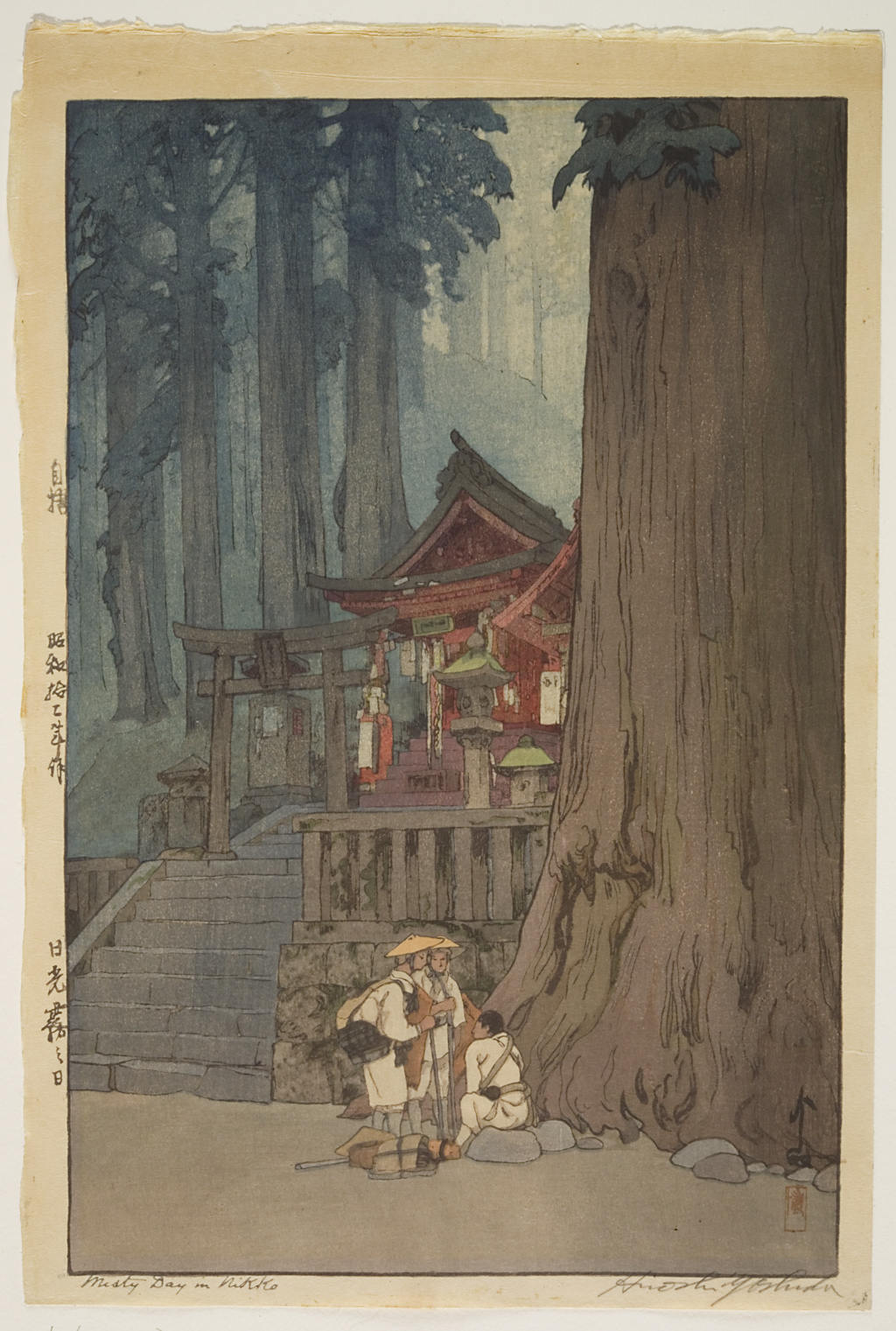Sacred Space and Japanese Art at the Spencer Museum of Art
Entry by Pinyan Zhu
This print is one of a set of six that Yoshida Hiroshi produced in 1937 representing scenes of Nikkō Shrine in Tochigi Prefecture. It depicts three pilgrims resting beside one of the shrine buildings. To the left is a flight of stone steps leading up to a torii gate and shrine. A dense and misty forest flanks the shrine, behind which the silhouette of the mountain is dimly visible.
Besides this particular shrine, the set of six prints portrays distinctive buildings and landscapes in the region of the sacred mountain Nikkō. The shrine complex was first built between 1617 and 1619 and was dedicated as the mausoleum to Tokugawa Ieyasu (1542–1616), the founder of the Tokugawa shogunate. Twenty years later, the third shogun Tokugawa Iemitsu (1604–1651) had it reconstructed, which produced the shrine complex seen today.
Yoshida created the image of this historic monument with innovative printmaking techniques that show the gradation of multiple layers of color and subtle tonal changes. Unlike earlier artists producing woodblock prints, Yoshida achieved his desired results by being in charge of the entire printmaking process. The characters for “self-made” on the left margin testify to Yoshida’s more direct involvement in the production of this print.

